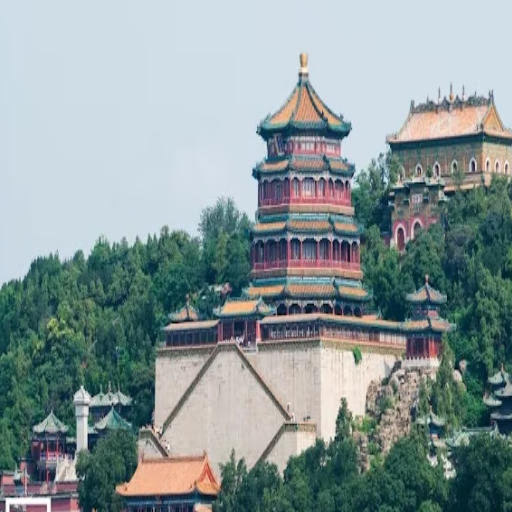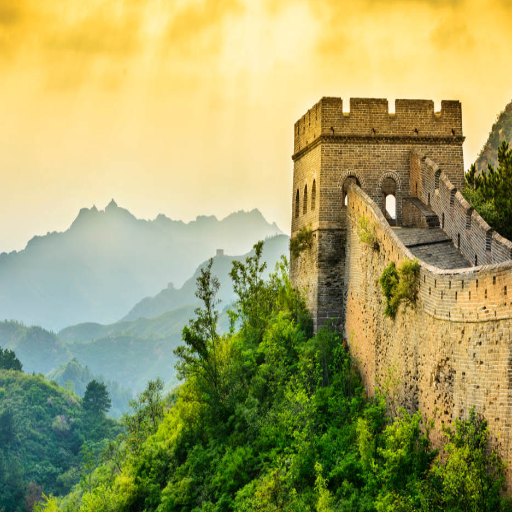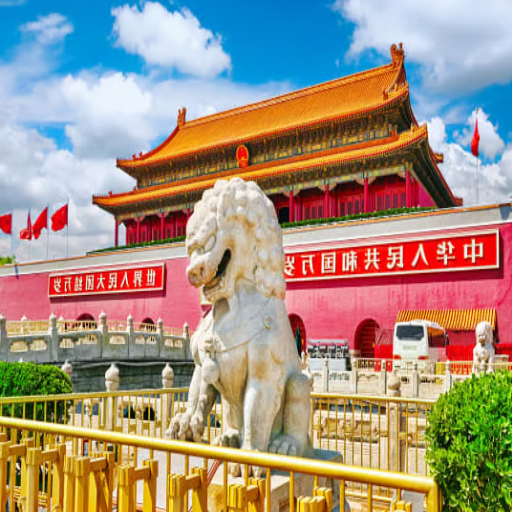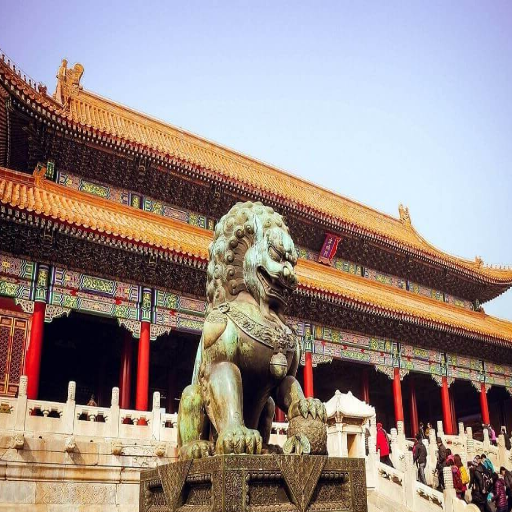China’s capital city, with a population of almost 22 million people, is bustling throughout the year and has historic sites that paved the way for modernization. Beijing marks its place on the global map due to its unique mix of age-old culture and modern development. The city has too many attractions, each with its own unique story. The grandeur of the Chinese civilization is evident in historical structures such as the Forbidden City or The Great Wall. Even contemporary structures built in more recent times, like the Olympic Park, stand tall and are symbolic of modern Beijing. This document sheds light on various interesting and captivating places in the heart of China that should be visited in 2025. Visitors from all parts of the world can enjoy different activities throughout the year. Foodies will have the time to uncover dishes representing Chinese Beijing’s true heart.
What Are the Top Tourist Attractions in Beijing?

Why Visit the Forbidden City?
The Palace Museum, better known as The Forbidden City, is a must-visit attraction with unmatchable cultural, historical, and architectural significance. For over five centuries, it was the political hub of ancient China and the imperial palace, serving as home to the emperors of the Ming and Qing dynasties. Chinese architecture is embodied in the complex, which consists of more than 980 buildings and their designs.
Area: It covers roughly 72 hectares (180 acres).
Architecture: The walls are red, and the roofs are iconic yellow, showing imperial power, and it contains almost 9,000 rooms.
UNESCO Status: It has been recognized for its exceptional preservation and has been a World Heritage Site since 1987.
Cultural Significance: The museum has over 1.8 million artifacts, making it one of China’s largest collections of cultural relics.
Knowing China’s riveting history and the fantastic ancient craftsmanship on display makes the Forbidden City an iconic destination for all travelers. It makes the visit genuinely priceless.
Exploring the Temple of Heaven
Historical Context: Construction of the Temple of Heaven began in 1420 during the Ming dynasty. It was an integral shrine where emperors prayed for bountiful harvests and commemorated yearly rituals.
Architectural Features: Notable components include the entirely wooden Hall of Prayer for Good Harvests, constructed without a single nail, and the Circular Mound Altar, which was engineered to reflect sound. The complex covers an area of 2.73 square kilometers and is easily distinguished by its harmonious arrangement of buildings known to have circular shapes, meaning Heaven.
Cultural Significance: This famous site epitomizes ancient Chinese architectural philosophy and cosmology principles, thus showcasing why it was included on the UNESCO World Heritage List in 1998.
Visitation Highlights: The site is popular with tourists because of its aura of stillness, silence, and the chance to admire historical rites and symbols captured in the smooth layout.
The Temple of Heaven is a notable example of China’s spiritual heritage and architectural achievement.
Discovering the Summer Palace
The Summer Palace in Beijing is a remarkable example of Chinese garden and palace design and was designated as a UNESCO World Heritage Site in 1998. Constructed chiefly during the Qing dynasty, it was primarily meant for the royal family’s holiday use and was surrounded by natural views such as Long Life Hill and Kunming Lake. The site covers around 290 hectares and is adorned with pavilions, bridges, and corridors harmonized with the natural landscapes.
Area: Approximately 290 hectares (726 acres).
Kunming Lake Coverage: It forms a water body that makes up roughly 75% of the total area and is another demonstration of a traditional Chinese water garden.
Architectural Features: It consists of over 3000 structures, including a long corridor, a marble boat, and a tower of Buddhist Incense.
Focusing on implementing aesthetic design and symbolic representation, the Summer Palace serves as a technical accomplishment and epitomizes the core features of Chinese culture. It is one of the most popular places for people who want to understand China’s imperial and artistic history.
How to Experience the Great Wall of China?

Popular Sections: Mutianyu and Badaling
To appreciate the Great Wall of China, both the Mutianyu and Badaling sections are perfect places to visit, each having their own remarkable traits:
Mutianyu Section
Characteristics: This part is less frequented due to its secluded nature, making it ideal for visitors looking for a more tranquil experience.
Accessibility: It is accessible by car or tour bus, 43 miles (70 km) from Beijing.
Features: Contains 22 watchtowers ideal for scenic viewing of the dense forests and orchards.
Badaling Section
Characteristics: The section is the most well-preserved and visited, suitable for first-time visitors and families with children.
Accessibility: Relatively close at 47 miles (75 km) from Beijing, this section has better public transport connectivity, with more trains and buses servicing the area.
Features: The handrails and walkways have been widened, making the area more accessible to large groups of tourists. It also offers excellent views of the mountains.
Both these sections show a part of the enormous magnitude of the Great Wall’s history and beauty while catering for different options regarding the ease of access, the beauty of the landscape, and the required activity level.
History and Significance of the Great Wall
The Great Wall of China is a source of potent military activity and is culturally significant. Initially built 2000 years ago during the Zhou Dynasty, it was extended later by the Qin and Ming dynasties. Its objective was principal boundary defense: to protect the country against invasions from bordering tribes. Furthermore, the Ming Dynasty (1368 – 1644) developed the construction of more excellent wall sections, which are recognized today. The Ming Dynasty utilized construction advancements of the time by using strong materials such as bricks and stones.
Length: All Great Wall branches combine for a total length of around 13,170 miles or 21,196 km. Covering this considerable scale was essential due to the military affluence in various provinces, which was crucial strategically.
Height/Width: Each section’s height and width are variable, although they typically measure 5 to 8 meters high and 4 to 5 meters wide at the top. This allows efficient troop movements and supply transport.
Watchtowers and Fortifications: The wall includes several watchtowers for observing and communicating. They are spaced at a significant distance, around 400 to 800 meters.
The Great Wall’s designs powerfully depict military activities in China, which is why it is considered an engineering masterpiece and a symbol of unparalleled strength and modification.
The work on it boosted trade and cultural exchange throughout the regions it covered, magnifying its historical importance.
Planning a Beijing Tour to the Great Wall
You need to decide on the wall section you want to visit and integrate it into your tour of Beijing seamlessly. My favorite, and one I normally recommend to my clients, is Mutianyu. It’s one of the more restored options, making it a good choice for families and first-timers. It also sits about 72 kilometers from Beijing, meaning it takes around 1.5–2 hours to drive from the central district. Of course, one could always go for Badaling, which is more popular due to its proximity and ease of access to the city. Still, it does come with the downside of being frequently overrun by tourists during popular seasons.
Deciding on a transportation method is also essential. If you want ease and comfort, rent a car, take a private ride, or tour. Public transport, such as buses, will take longer. Experienced hikers could opt for Jiankou, but it’s recommended that you have the right gear and be in proper shape for this steep, technical section.
Last, you’ll need to consider the weather in advance. Spring and autumn are the best times for visiting, with the best temperatures and clear views. Remember that many sections require walking or climbing, so ensure you have the right shoes, water, and sunscreen ready.
The distances from Beijing are Mutianyu (72 km), Badaling (60 km, 1-1.5 hours by car), and Jiankou (75 km).
Elevation and difficulty: Mutianyu and Badaling are moderate, while Jiankou is excellent due to steep inclines and unrestored paths.
Access times: Most sections are accessible between 7 and 8 AM and close around 5 PM. For instance, Mutianyu is accessible from 7:30 to 5:30.
With thoughtful planning, you can appreciate this historical marvel while enjoying it in a way that suits your tastes and physical abilities.
What Can You Do at Tiananmen Square?

Visiting the Mao Mausoleum
The Mao Mausoleum, in which Chairman Mao Zedong’s remains reside, is located centrally at Tiananmen Square. To resonate deeply with the visit, keep the following points in mind:
Opening Hours: The tight schedule allows visiting from Tuesday to Sunday between 8 am to 12 pm. Due to buyer’s remorse or no-show-due-to-event policies, partial opening hours and skip periods may exist around some holidays and other events.
Admission: Entry is free. Guests must register by presenting a government-issued identification card.
Dress Code: Standard business clothing should be observed rather than leisure clothing to pursue respect. Casually wearing shorts or tank tops is advised against.
Prohibited Items: Large bags and any photo or video collection are strictly prohibited inside the mausoleum. All entrances are guarded and machine-scanned.
Average Visit Duration: On average, a visit takes 30 to 40 minutes, but this depends heavily on the capture rate or density.
Such rules govern the decorum of the visit, ensuring that history is indelibly etched in the minds of people who come to experience the place.
Exploring the National Museum of China
The National Museum of China, located east of Tiananmen Square in Beijing, is one of the most famous and significant museums worldwide. It contains many pieces documenting ancient times to the modern era and is dedicated to preserving Chinese culture and history.
Opening hours include 9:00 AM to 5:00 PM, with the last admission allowed at 4:00 PM. The museum does not operate on Mondays except during public holidays.
Ticketing Information: No admission tickets are necessary, but identification cards with pictures must be presented at the entrance. Due to their nature, special exhibitions usually have separate ticketing fees.
Recommended Visit Time Duration: Plan at least two to three hours to review everything the museum offers.
Notable Exhibitions The museum features exhibitions such as “Ancient China” and “The Road of Rejuvenation.” Both demonstrate more than five thousand years of Chinese civilization and its progress towards modernity.
Guidelines: All visitors must stay quiet and, without exception, do not touch any object on display. Photography is allowed only where permitted.
Plan your time well, adhere to these parameters to get the most out of this iconic institution, and fully immerse yourself in the rich culture and history documented through the years.
The Symbolism of Tiananmen Square
Tiananmen Square is a monumental emblem of China’s history and politics. It portrays the Chinese people’s national pride, strength, and progress while signifying their resolve to achieve unity. The square is a stage for triumphant and solemn events, making it a marker of historical transformation and remembrance.
Historical Significance: The Square alone is strongly correlated with significant milestone events, such as the birth of the People’s Republic of China in 1949. It stands as a symbol of independence and modern reform.
Cultural Impact: Tiananmen Square is associated with the standing mark of Chinese culture and the hope for the nation’s future. The square also retains the essence of pivotal events showcasing national resiliency.
Architectural Features: The Great Hall of People and the National Museum of China, which surround the Square, reflect its tourism significance. These institutions capture the primary features of the Chinese political landscape and culture, making the square dazzlingly immense.
Learning about the symbols of Tiananmen Square will help you better appreciate its beauty and understand the Chinese people’s mingled aspirations and hard work.
How to Plan Your Beijing Trip?

Creating a Beijing Itinerary
Crafting my itinerary for Beijing, I would first sketch out essential monuments, such as Tiananmen Square and the Forbidden City as its history and culture are the city’s essence. Given the enormous expanse of Tiananmen Square, which is 44 hectares wide, I would make sure that I have more than enough time to walk around its key attractions, for instance, the Monument to the People’s Heroes and Pezzo di Mao’s Mausoleum (Mao’s Zedong’s tomb). This helps appreciation fully understand the cultural and historical value these places embody.
I would also chart the order of the attractions, as grouping cities within a shorter radius to cut travel time helps to utilize time efficiently. For example, it is practical to visit the Great Hall of the People and the National Museum of China after visiting Tiananmen Square since they are located very close to the Square. This utilizes the practicality of grouping attractions of equal importance and distance.
I will make proper changes if any part of my itinerary is affected by an operating hour, a crowd level, or other time or technical parameters. For example, I ensure that the specific opening times and booking prerequisites for museums do not clash with my schedule. I often visit the landmarks early in the morning or later in the afternoon to admire the landmarks without the hassle of peak times. Proper planning based on these few details makes it easy to explore Beijing smoothly and happily.
Best Time to Visit in Beijing
Based on my experience, I recommend traveling to Beijing in spring (from March to May) and autumn (from September to November). The weather is usually mild, there’s little rain, and the good air quality makes nature walks enjoyable. These travels also ensure that one is not disrupted during visions by extreme weather violence, such as brutal summer or winter temperatures.
One should plan for these in advance if one wishes to consider technical factors like site closures or event timings. One example would be national holidays like April’s Golden Week or the Spring Festival in October, when tourist sites can become highly crowded and may need plan changes. Furthermore, the summer and spring months enable one to enjoy The Great Wall and empires like the venerable City with unencumbered early morning visits devoid of numerous viewing tourists. Careful planning of these factors helps maximize the Beijing experience and much admired city visit.
Top Beijing Tours for 2025
From what I know and the questions raised, I would instead concentrate on tours that feature the best time to visit in spring and autumn, where the weather is moderate and hot spots aren’t overly populated. For example, these seasons have guided sunrise tours on the Great Wall. These tours are less crowded in the morning, and the breathtaking views are a delightful cherry on top. Furthermore, the morning tours of historically significant places such as The Forbidden City or The Summer Palace are more suitable since they have fewer visitors before lunch.
Looking optimistically at the technical side, things like high preliminary purchase demands such as reservations for the holidays like Golden Week or Spring Festival when prices and crowds are much higher during those periods. Weekday tours could also be more favorable than weekends due to the staggering number of tourists. Also, I would take as many entrance or transport tickets as possible beforehand, namely those for the most famous places, hoping to save time on construction blockages or closings. These considerations guarantee smooth and vivid impressions.
What Are Unique Attractions in Beijing?

Exploring the Historic Hutong Neighborhoods
Considering I traveled down the historic Hutong neighborhoods in Beijing, I would concentrate on their unique charm and the cultural value they represent. The narrow alleys and traditional courtyard homes showcase old Beijing and the local way of life. To fully immerse in local culture, I would prioritize guided walking tours, as these offer these neighborhoods’ history and storytelling aspects.
On a practical note, bookings for guided tours are often a requirement, especially during weekends or high seasons for tourists. For this reason, I would pick morning or weekday tours to dodge the heavy crowds and enjoy the view better. Other necessities include comfortable shoes for walking and light clothing to improve mobility in the warmer seasons. If transportation to the Hottungs is necessary, I would budget for a mix of public transportation or ride-sharing services to ensure I get there on time to make the most of the visit. Considering those considerations, exploring Beijing’s historic treasures would be enriching and hassle-free.
The Charm of the Lama Temple
I would study the history and cultural context of Lama Temple in advance because this Tibetan Buddhist Temple in Beijing deserves to be appreciated. For truly unique experiences, I would try to visit the Temple on weekday mornings, not heading head-on toward rush hours. This would enable me to enjoy the Lama Temple personally and up close. I knew there was a blend of intricate religious artifacts, architecture, and space, so I grabbed all the needed time.
To maximize my efficiency, I bought tickets well in advance, which was recommended to ensure I did not waste valuable time. To make the most of the trip, I made sure to wear comfortable shoes in addition to the required modest clothing. I would take the subway and get off at the Yonghegong Lama Temple Station if I needed transportation. This way, I would save not only money but also time. Overall, these measures would allow me to appreciate the architectural and spiritual beauty of the Lama Temple.
Experience Universal Studios Beijing
While preparing for my trip to Universal Studios Beijing, I made sure I put thought into similar issues. To make the most of my visit, I intended to check out the site beforehand, especially the rides and attractions, and organize my day based on my preferences, focusing on the most visited places like Transformers Metrobase or Wizarding World of Harry Potter because they are usually a big hit. If I arrived on the weekdays early in the morning, I could make the most of my time at the studio and avoid standing in long queues.
From a logistics perspective, tickets have to be purchased online ahead of time if they are to be bought at all, and this is also important for reserving a place and getting any discounts attached to the online purchase. As the topic of clothing comes in, good walking shoes are a must because the theme park grounds are significant, and seasonable clothes are needed to feel relaxed. Oh and of course, I should not forget to install the official Universal Studios Beijing app, that way I can access the park map, find out the waiting times for the rides and even the time of the events. For transport, my choice would be to take the subway in Beijing to the Universal Resort Station because it is suitable and not expensive. That way, I would enjoy my trip more because it would be blended with efficiency.
Frequently Asked Questions (FAQs)
Q: What places should one visit while traveling to Beijing?
A: While on vacation in Beijing, look for the Temple of Heaven Park, where Ming and Qing Dynasty Emperors constructed the Hall of Prayer for Good Harvests. Other spots include the Forbidden City, the largest palace complex in the world, the different sections of the Great Wall, and the beautiful Summer Palace at Kunming Lake’s center.
Q: What is the best way to experience Beijing’s historical culture?
A: Beijing Ctrl Institute Keyboard for Chinese Learning History can best be experienced by going to the serene courtyards of the Confucius Temple and the astonishingly informative Beijing Capital Museum. Give yourself the chance to view ancient and modern Beijing from Jingshan Park, which is located near the city center.
Q: Can you tell me more about the Beijing Olympic Park?
A: The Beijing Olympic Park, which constrains the iconic Bird’s Nest Stadium and Water Cube, is one of the busiest attractions, boasting some of the world’s largest sports complexes. Initially built for the 2008 Beijing Olympic Games, it is a marvelous symbol of modern architectural renown.
Q: What is unique about the Temple of Heaven Park?
A: It features the Hall of Prayer for Good Harvests, where emperors used to conduct sacred rites to bless them with rich harvests. The park’s design showcases a balance between earth and heaven. Because of such impressive features, the Temple of Heaven Park is a UNESCO World Heritage Site and a symbol of the People’s Republic of China.
Q: Where can I find the best views of Beijing?
A: The favorite view of Beijing is at Jingshan Park, which lies on the North side of the Forbidden City. The hilltop park gives you an imposing view of the city in its heart, especially at sunset.
Q: What are some lesser-known Beijing tourist attractions?
A: Other than the famous spots, make sure to visit the peaceful escape called the Confucius Temple, with a rich history, as well as the lively commercial street called Nanluoguxiang, which is filled with traditional courtyard houses and cafes. These allow a sneak peek at the local culture.
Q: What should I keep in mind as a first-time traveler to Beijing?
A: Travelers making their first visit to Beijing must prepare a mix of the history and the modern attractions. Think about taking public transport for convenience, and if possible, travel during spring or autumn because it’s usually pleasant. Make sure you try the local food and traditional marketplace, too.